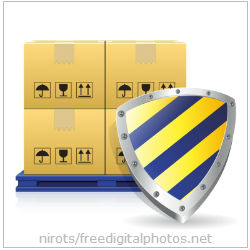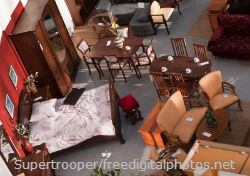|
Get Free Moving Quotes
|
|
How to Pack for Long Term Storage |
|
Rating : 0.0/5
531 Views
|
|
|
|
|
|
If you need to store your items in a storage facility for an extended period of time, the packing process requires a little more attention to detail. Safely packing items that will be left alone for long periods of time is a little different than regular packing for a move. requires a little more attention to detail. Safely packing items that will be left alone for long periods of time is a little different than regular packing for a move.
General storage tips
Long term storage's purpose is to keep your belongings safe and secure without maintenance. Pack in a way that minimizes potential damage when your items are untouched for long periods of time. Your items should be protected from moisture, bacteria, stress, and vermin.
- Start by choosing a climate controlled storage facility. Items left in a storage unit for a long time should not be subjected to extreme temperatures.
- Disassemble anything that you can. Most furniture is less stressed and less likely to warp over time if taken apart.
- Use sturdy cardboard boxes. Cardboard will let moisture out of boxes to avoid bacteria buildup but is also sturdy enough to protect your items.
- Stack lighter boxes on top of heavier ones.
- Protecting your items with bubble wrap is always a good option.
- Keep your most frequently-used items at the front of the storage unit.
Packing electronics
- The original box and packaging are the best storage option.
- Use a similar sized box if the original is unavailable and fill in the space with packing paper.
- Consider plastic covers to protect from moisture.
- Unboxed items may get dusty, so electronics should be boxed or covered.
Packing clothing/bedding
- Vacuum-sealed bags are good for these fabric-based materials because they save space and protect from moisture, dust, and animals.
- Place sealed pillows and blankets inside of appliances like ovens, and place sealed clothes inside dressers.
- If you don't want wrinkled clothing, invest in a wardrobe box to hang and protect the clothing in an enclosed container.
- If you plan on storing the clothing for decades, the constant stress of gravity could damage hanging clothes.
Packing appliances
- Defrost any freezers or refrigerators before packing.
- Thoroughly clean and dry the inside of all kitchen appliances. Any remaining food particles or moisture creates a breeding ground for bacteria during storage.
- Use baking soda to make sure the interiors of all appliances are dry.
- Enclose the back of refrigerators and ovens to avoid attracting vermin.
- Place tarps or blankets over appliances to avoid dust accumulation during long term storage.
Packing Photographs
- Climate control is especially important for photos. Make sure you choose a climate controlled unit for storing them.
- Use a photo album if you have one. This should keep the photos flat, dust free, and away from direct light which could wash them out.
- Tape individual photos together and separate them with clean cardboard to prevent bending and to protect them from light. Just make sure you don't put tape directly on the photos.
Packing furniture
- Disassemble what you can and wrap legs and other parts in bubble wrap.
- Label all separated parts.
- Keep all the fastening nuts and bolts together in a bag taped to the main part of the furniture.
- Polish wood furniture before storage for additional protection.
- Treat leather furniture with a leather conditioner.
- Wipe metal furniture with oil to help prevent rusting.
Other specific items
- Disassemble musical instruments since many of them are under constant stress. De-string guitars, and unscrew taught drum heads.
- Wrap mirrors and framed pictures in paper, then bubble wrap, and place them in flat custom-fit boxes. Remember to label them "fragile."
- Empty vacuum cleaner bags to avoid mold or vermin.
- Hire professionals to pack big or difficult items like pianos, large exercise equipment, and pool tables.
Now that you know how to pack for long term storage, find a good storage company. Be sure to ask about climate control and security when choosing the right storage facility for you. |
|
 |
Author : Mike Sannitti
on October 1, 2014
TopMoving.ca - Moving Expert
|
| |